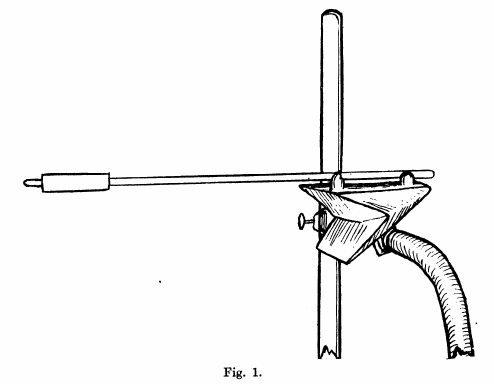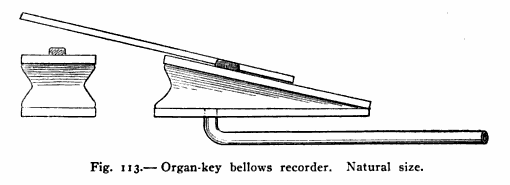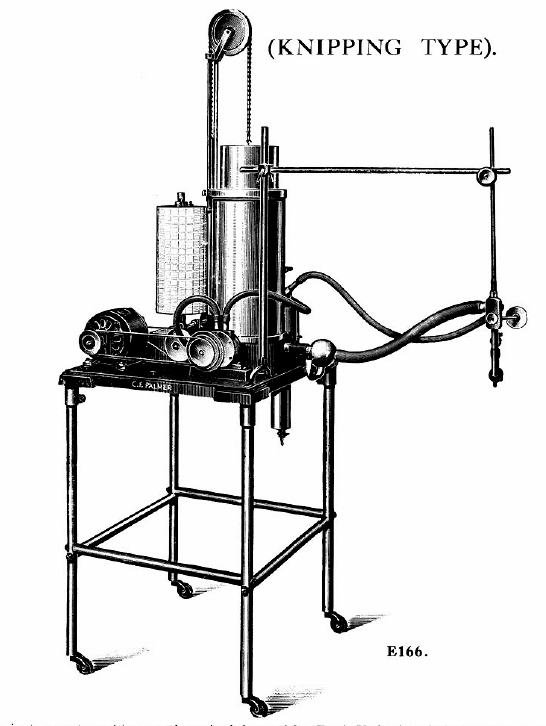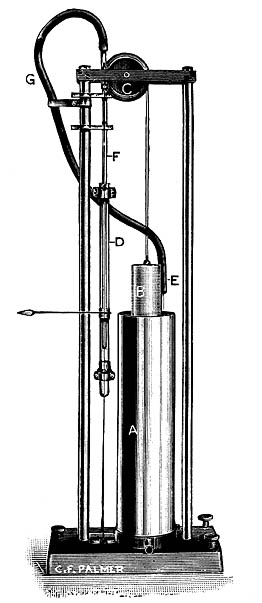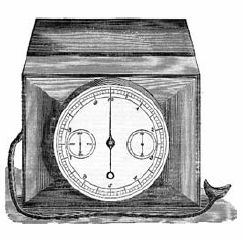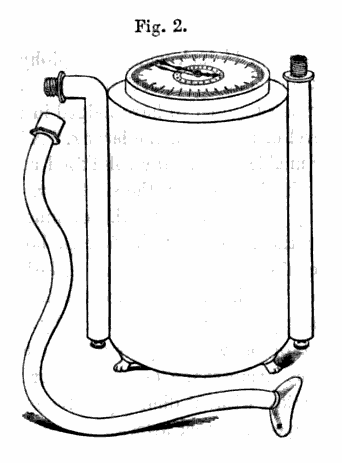
From The American Journal of Medicine, 1859, page 379.
“1859, Jan. 5. Improved Spirometer – Dr. S. W. Mitchell exhibited an improved form of spirometer, of which he gave the following description: –
“While conducting some recent researches upon the physical statistics of natives of this country, I was struck with the clumsiness, and, in some cases, with the inaccuracy, of the form of spirometer in common use. This instrument, well known as Hutchinson’s spirometer, is accurate in its indications when well made, but is always inconvenient, because it requires to be filled with water, and, on account of its weight and form, is not easily carried from place to place. This latter objection applies equally to all the spirometers I have examined; while most of the instruments on the side of the water are also open to the additional objection of want of accuracy.
“The instrument which I have used in its place is merely a small “dry gasmeter” numbers of which are made in this city by Messrs. Code, Hopper & Co. With the aid of Mr. Gratz, a member of this firm, some slight alterations have been made in the valves of the meter, and the inlet-pipe was somewhat narrowed. A large dial-plate, graduated to inches and halves of inches, was placed on top of the meter, so that the rotation of an indicating hand would mark the number of cubic inches which passed through the machine.
“It is unnecessary to describe the interior details of the meter thus adapted to spirometric use. In the form of a dry gas-meter it has been used, almost to the exclusion of the very inconvenient “wet-meter” in many parts of this country, and has been found to perform its work of registration, for years together, without serious error and without needing repairs.
“The instrument thus briefly described is figured in the annexed cut. Its height as but fourteen inches, its width eleven. The inlet-pipe is so marked, and to this, when arranged for use, an India-rubber tube and mouthpiece are attached. The inlet and outlet-pipes form convenient handles when the spirometer is to be carried.
“I have tested the accuracy of this little instrument with great care, and have put to more severe trials than the meter is usually subjected to. Its indications appeared to be to be almost perfect. The new form of spirometer runs with so little friction, that a pressure of one-eighth of an inch of water will move it readily. One source of error is thus avoided, since, if the instrument did not move so easily the first air blown into it would be more or less condensed, and so occupy less space than it should do.
“After the spirometer has been used fifty or sixty times, the moisture from breath, which collects in the form of a few drops of water within the instrument, should be allowed to escape by the removal of a button placed underneath the meter.
“The form of spirometer here described has lately been employed by the biological department of the Academy of Natural Sciences of this city, to measure the pulmonary capacity of some five hundred men. In every way the instrument was found to be satisfactory,being portable, requiring no water, and not being readily deranged.
“So far as the committee have gone, hey have seen increasing reason to regard with distrust all spirometric valuations of men. In every case they have been careful, by repeated trials, to obtain the best result of which the individual was capable; but the have been, so far, much impressed with the difference between their own results and those obtained buy others abroad. As the height, weight and girth of chest have also been taken, the committee hope, at some future time, to be able to report in detail their results, as bearing upon the lung capacity of men born in this country.
“The spirometer is to be obtained from Messrs. Code & Hopper of this city, well known as manufacturers of gas-meters. The cost of the new instrument will probably not exceed fifteen dollars, which is less than that of the worst ordinary spirometer now in use.”
